Six Sensational Hardwood Bathrooms
Have you considered using solid hardwood cabinetry and millwork in your bathroom, but hesitated given the constant humidity? In fact, as long as the room is properly ventilated, and the wood surfaces treated with a moisture-resistant finish—like tung oil, polyurethane, or varnish—such favorites as oak, walnut, cherry, and maple will stand up well to a steamy environment. “Real American Hardwood® products can be used in the bathroom to add warmth, texture, and character to a space that may feel cold and clinical,” says Linda Jovanovich of the American Hardwood Information Center. “And it adapts to any style, from the cozily traditional to the coolly contemporary.” Here are six bathrooms that do just that.
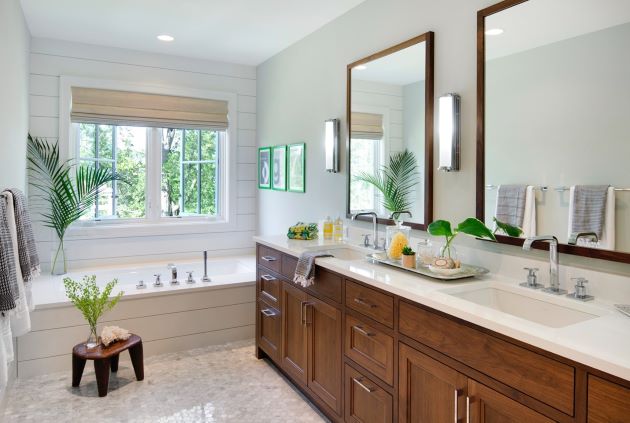
Everything’s bright and breezy in this Minneapolis bathroom by Swan Architecture (@swanarchitecture) and Lucy Interior Design (@lucyinteriordesign): nickel-gap shiplap on the end wall and bath surround; shiny chrome sconces and sink fittings; canvas duck Roman shades. But the beachy, upbeat vibe is cleverly balanced by the custom walnut vanity, a solidly handsome piece that strikes a more substantial note without being overly serious. Photograph by Spacecrafting
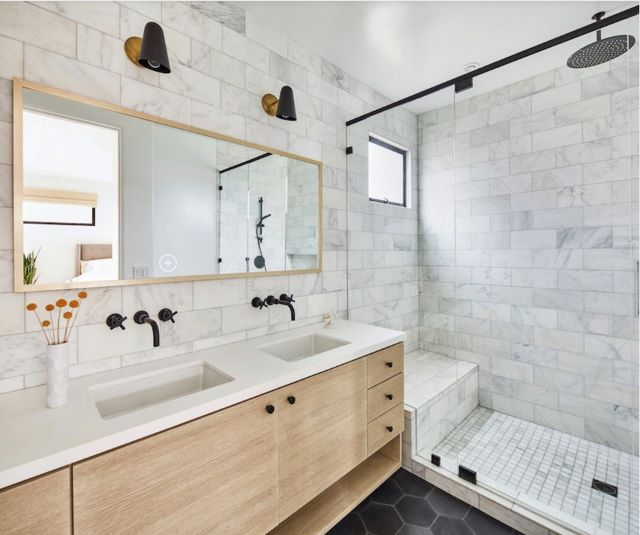
Architects Hsu McCullough (@hsumccullough) show mastery of subtle color and texture in this Los Angeles bathroom. Slate-gray cement tiles on the floor and pale-smoke marble tiles on the walls provide a quietly glamorous setting for the main event: a custom vanity of lightly bleached white oak with a clear matte sealer—Rubio Monocoat, derived from natural plant oils—that allows the full beauty of the wood to shine through. Photograph by Dan Arnold Photo
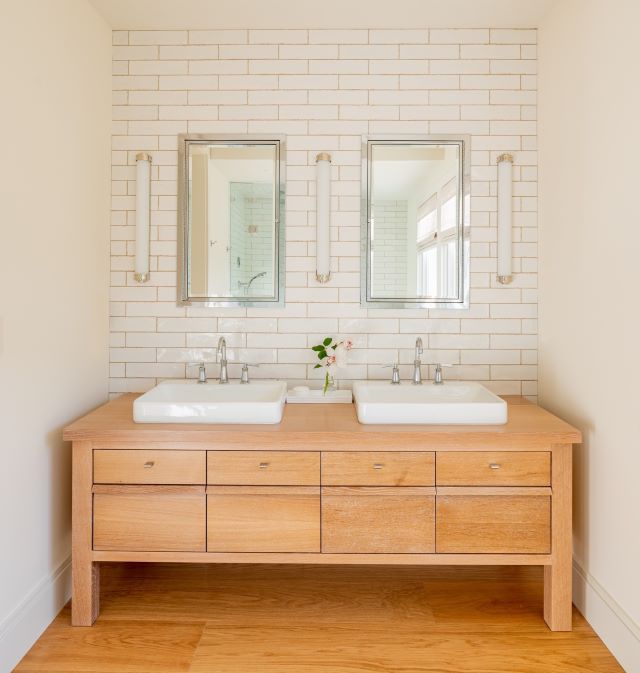
Cerusing—also known as “liming”—is the application of white-pigmented, non-toxic wax sealers to porous wood to bring out the natural grain without changing its color. Architects Michael McKinley and Associates (@mckinleyarchitects) make expert use of the finish for this custom cerused-oak vanity in a Connecticut bathroom. White subway wall tiles, chrome fittings and mirror frames, and oak flooring set the honey-tone cabinetry off to perfection. Photograph by Jason McGrail
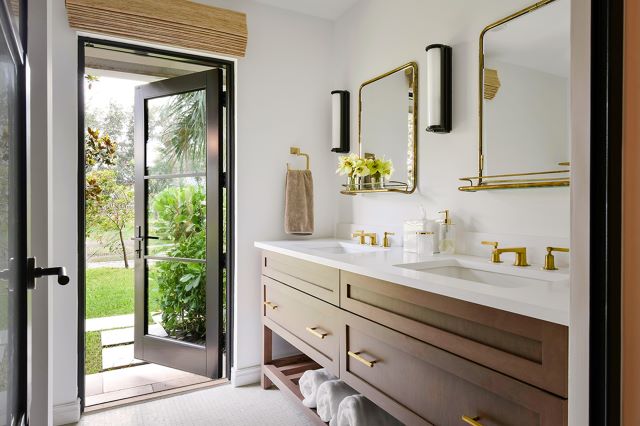
Two firms, Milieu (@milieu_design_spokane) and Designology (@designologyluxuryinteriors), worked on the makeover of the guest bathroom in a Wellington, Florida, equestrian estate. The glass door lets the great outdoors in, but the interior is totally urbane. A pair of vintage mirrors salvaged from an old steamship set the sophisticated tone, which is echoed in the polished bronze faucets and matching pulls on the custom maple vanity—a sleek design finished in Rustic Gray stain by Sherwin Williams. Photograph by Ken Hayden
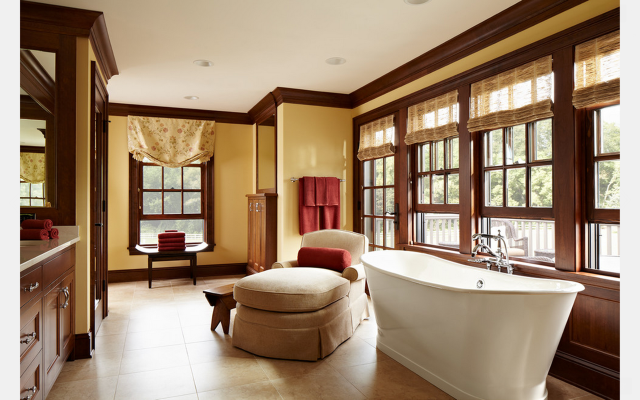
For the renovation of an undistinguished 1980s colonial house in Minneapolis, architect Meriwether Felt turned the bland main bathroom into a sophisticated retreat with a somewhat rustic feel by installing characterful cherry moldings, trims, and casings. “The stained wood warms up the bathroom and provides richness,” Felt says. “The client asked for a luxurious yet elegant feeling, and cherry fit the bill perfectly.” Photograph by Susan Gilmore
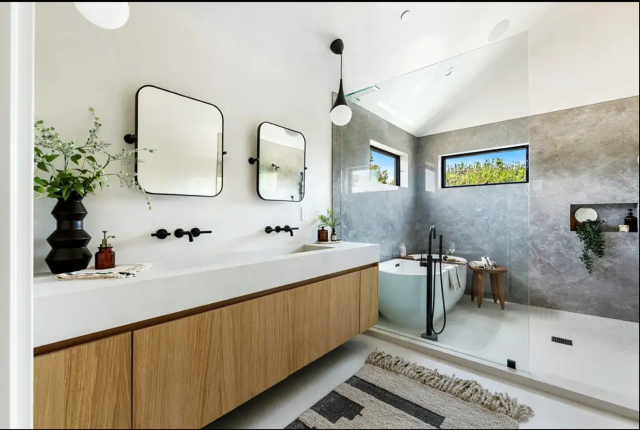
Modern Scandinavian design inspired the main bathroom in a Santa Monica, California, house by Hamilton Architects (@hamiltonarchla); ergo, the clean lines, warm materials, and uncluttered forms that characterize the effortlessly chic, spa-like space. Chief among the scene-setting elements are the sculptural tub, graphic black faucets, and the custom floating vanity. The rift-sawn white-oak cabinetry is an unbroken expanse that’s free of hardware or other visually distracting details. Photograph by Paul Barnaby
Visit www.hardwoodinfo.com for more about using American hardwoods in the bathroom.

 -
- 

 - Inverter generators and portable battery stations are trending solutions for take-anywhere power. Small footprints, manageable weights, and simple charging or fueling options make both inverters and batteries an ideal solution for off-grid excursions, working where power is not available, or providing needed electricity during a power outage.
- Inverter generators and portable battery stations are trending solutions for take-anywhere power. Small footprints, manageable weights, and simple charging or fueling options make both inverters and batteries an ideal solution for off-grid excursions, working where power is not available, or providing needed electricity during a power outage.
 -
- 
 - America’s homeowners can expect to shell out more cold cash to keep warm this winter as they face the highest home heating costs in more than a decade -- making optimal energy efficiency more essential than ever.
- America’s homeowners can expect to shell out more cold cash to keep warm this winter as they face the highest home heating costs in more than a decade -- making optimal energy efficiency more essential than ever. 